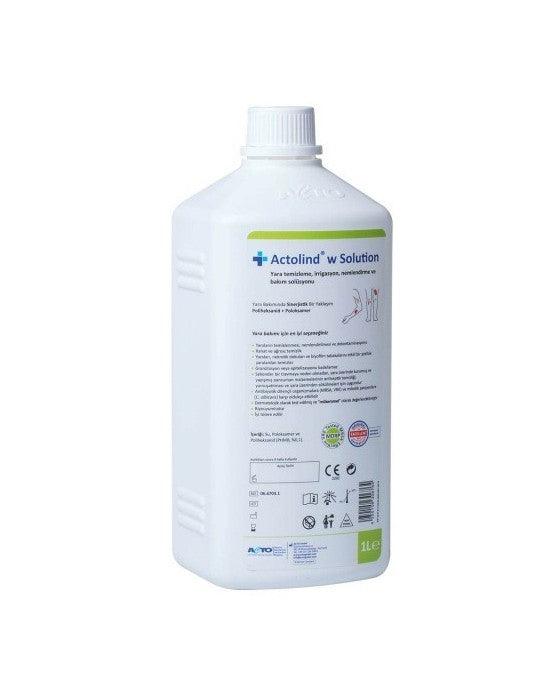
Acto
Actolind Wound Care Solution 1L
Actolind Wound Care Solution 1L
Ankara Çankaya
Prof. Dr. Ahmet Tanet, Kışlalı Mah. Safranbolu Cd. Konutkent Mah. 2 Çarşı No: 14
06810 Ankara
Türkiye
Actolind® w Solution
Actolind® w Solution is a preventive care solution that can be used in combination with medical materials such as bandages, dressings, tampons or wound filling materials for the cleansing, irrigation, decontamination and moisturising of acute and chronic wounds, infected or non-infected, and 1st and 2nd degree burns.
Product Features
Actolind® w Solution enables mechanical cleaning of wounds. By reducing surface tension thanks to the surfactants in its composition, wound cleaning required before wound care is carried out comfortably and painlessly.
- It shortens the recovery time.
- Accelerates granulation and epithelialization.
- Prevents the formation of biofilm.
- It is highly effective against multidrug-resistant organisms (MDRO, MRSA, VRE) and mycotic pathogens (Candida albicans).
- It is compatible with commonly used wound dressings.
Chemical Composition
Poloxamer 188, Polyhexamethylene biguanide (Polyhexanide, 0.1%), purified water Actolind® w Solution is used for cleaning and irrigation of the wound surface before treatment.
How to Use Actolind® w Solution
It can be applied directly to the wound or can be applied to a bandage or gauze. To minimise the risk of contaminants and microorganisms being transferred to the wound surface, the entire wound and its surroundings should be thoroughly cleaned with Actolind® w Solution.
Indications
• In acute wounds that are infected or not (traumatic wounds or surgical wounds resulting from cuts, tears, abrasions, crushing, biting, stinging, etc.), • in chronic wounds, infected or not (e.g.: diabetic ulcers, venous ulcers, bed (pressure) sores, etc.), • In infected or non-infected thermal or chemical wounds (1st and 2nd degree burns, wounds caused by electric current, radiation wounds) • In the entry areas of urological catheters, • It is used in the care of peristomal skin, fistulas and abscesses, in the care of the wound surface, moisturizing it and covering it with a protective layer before the application of materials such as bandages, gauze, compresses and wound fillers, and in creating a barrier between the wound and the dressing to prevent drying and adhesion.
In the Consensus document published on Wound Care Products, Polyhexanide (PHMB) is shown as the 1st Choice in many wounds such as wounds at risk of infection, burns, and decontamination of acute and chronic wounds.







